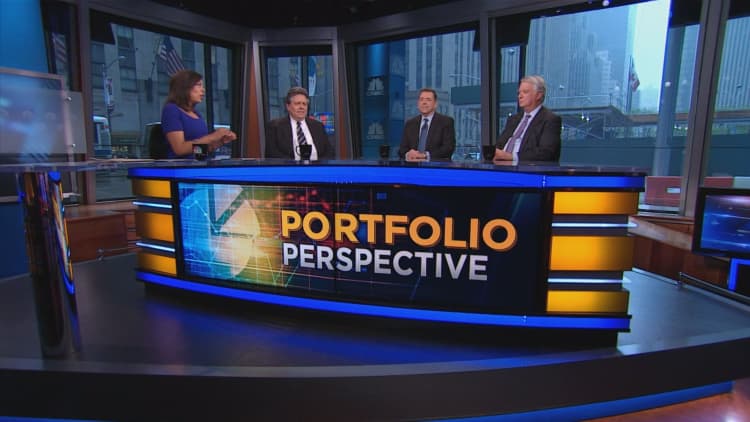The 401(k) plan originated from some quirks in 1970s tax law and wasn't intended to be the universal solution to funding retirement. In more than three decades of growth, however, that's what it has become.
Today over 90 million Americans own more than $6.5 trillion in defined contribution plans, according to a 2015 report from Vanguard. Yet many savers still don't understand the 401(k) process. The same goes for similar plans, such as the 403(b) for nonprofit employees, 457 for public education workers, and federal government employees' Thrift Savings Plan.
The 401(k) plans, which replaced traditional defined-benefit pensions, are very different. Perhaps the biggest change is that while every employee contributes to a pension fund, 401(k) contributions are optional. With a 401(k) plan, simply electing to participate is the initial and most important move.
"The first step is to get in the plan as early as you can and save as much as you can," said Rob Austin, director of retirement research for Aon Hewitt, which administers 550 large defined contribution plans covering 5.7 million participants.
Today a growing number of employer-sponsored 401(k) plans automatically enroll employees. Vanguard's report found 36 percent of plans had auto enrollment, up from 27 percent in 2010. However, people can still opt out, and many do. Austin said that, overall, about 21 percent of eligible employees don't contribute.
After signing up, the next move is to contribute enough. Officials at Fidelity Investments, the largest defined-contribution administrator, overseeing more than $1 trillion in plan assets, say savers should put away 15 percent of earnings.
While 15 percent is a commonly cited figure, virtually all experts say savers should, at a minimum, contribute enough to get all of their employer's matching contribution. Most plans, especially at larger employers, will match employee contributions up to a set amount, such as 3 percent of salary.
"You have to max out up to at least what the company's going to match," said Kirk Jewell, a certified financial planner and founder of Global Financial Services. "That's one thing I stress: It's free money that you're potentially leaving on the table."
You have to max out up to at least what the company's going to match. ... It's free money that you're potentially leaving on the table.Kirk Jewellcertified financial planner and founder of Global Financial Services
Still, Aon Hewitt has found that 23 percent of 401(k) plan participants aren't putting in enough to get all available matching dollars.
Next in the process is choosing the right investments. Professional managers decide how to invest traditional pension funds. Defined-contribution plans give individual participants that responsibility. Plans may offer as choices a handful to dozens or even hundreds of mutual funds as well as managed accounts and brokerage services.
Few savers themselves are comfortable with the job. Fidelity research shows 77 percent of people feel they lack time and skill to select appropriate investments.
"There are so many solutions, it can be very overwhelming to look at this long list of funds and determine where to invest," said Meghan Murphy, director of thought leadership for Fidelity.
A growing number of plans default participant contributions into target-date mutual funds. These are run with an eye to a specific year of retirement. Professional managers adjust allocation of stocks, bonds and other assets, becoming more conservative as the planned retirement date approaches.
Target-date funds are becoming a favorite option for employees. Vanguard reports that 29 percent of participants in 2014 invested in a single target-date fund. The company forecasts that by 2018 the number will grow to 63 percent.

Target-date funds are not bad choices, said Jewell at Global Financial Services. Their holdings typically consist of a number of index funds, as well as other mutual funds. That means they usually have low costs and are well diversified, he added.
For 401(k) savers who prefer a number of different mutual funds, Jewell said it's important to rebalance a portfolio each year or so. Rebalancing manages risk by avoiding overexposure to individual asset classes or sectors, such as large-cap stocks or international bonds.
Jewell advises using the auto-rebalancing tools some plans offer, but investors can also buy and sell funds themselves to maintain desired allocation.
It's also necessary, of course, that savers actually leave funds in the plan. The plans are intended to fund retirement, not save up for education or other purposes.
However, participants can withdraw money before age 59½, subject to a 10 percent penalty plus any taxes due. Some savers do this when faced with a cash crunch, while others take loans from their accounts but fail to pay them back.
"The most common mistake is cashing out when changing jobs," Fidelity's Murphy said. Sometimes plan administrators will mail a check to an employee who is leaving the company.
Workers who spend the money instead of rolling into a new savings plan, such as an individual retirement account, incur penalties and taxes and also reduce the amount available to grow tax-deferred.
Experts advise avoiding early withdrawals if possible. Failing to re-invest even $10,000 from a former employer's plan can have a significant impact, especially for younger workers, Murphy said, because of the lost earnings compounded over decades.
"That is money that, if left invested over your entire career, would make a big difference," she said. "It could amount to hundreds of dollars in lost income per month in retirement."
The final step is preparing to withdraw the funds after retirement. The Internal Revenue Service requires 401(k) savers to begin withdrawals after age 70½, but savers can decide to withdraw more or sooner, and can also act now to reduce the taxes they pay on their withdrawals.
One way to manage future taxes is to direct some contributions into a Roth 401(k), if the employer has one available. Roth contributions are made with after-tax money, but withdrawals after retirement incur no taxes, helping to make the last part of the 401(k) process as painless and beneficial as possible.
"Tax-free money down the road could help you have more income in retirement," said Jewell at Global Financial Services.
— By Mark Henricks, special to CNBC.com







